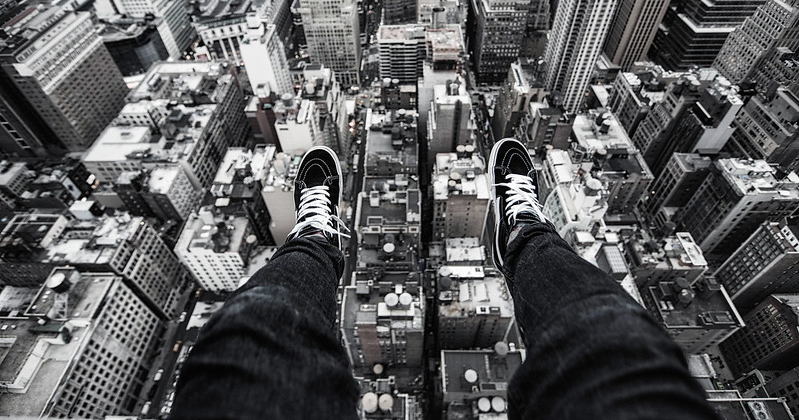Acrophobia
and virtual reality

Fear of heights —also known as acrophobia— is a condition that affects 3–5% of the general population. It is not necessarily pathologic, and it only implies a problem if the anxiogenic response is uncontrollable, if it can drive the patient into a panic attack or into suffocation sensations, etc. This phobia belongs to the category of “specific phobias”, which may provoke an intense and anxious response to a specific stimulus —in this case, when people are exposed to heights. Fear of heights is considered natural, even adaptative, since the avoidance response could be positive when people feel they are in a risk environment.
There are several agents implied in the development and maintenance of this phobia and Coelho, Waters, Hine and Wallis (2009) consider both non associative —hereditary— and associative —conditioned— factors in their model. So, it is considered as a multi-causal phenomena because not all the patients that seem to suffer this phobia have developed it in a conditioned or learned way. Moreover, it was found in a longitudinal study realized by Poulton , Davies, Menzies, Langley and Silva (1998) that those who took part in the study and suffered significant lesions and falls before the age of 9 do not show a phobic response when they are 18.
However, some people manifest a phobic behavior pattern when they are exposed to heights, such as feeling anxious or even presenting panic attacks. In these cases, treating the patient is essential since this shows a high level of acrophobia and the patient may try to avoid any place not situated at ground level. The avoidance response intensity depends on the patient’s particular condition, but it is particularly important to understand how the avoidance response intensity manifests itself through a continuum, which is a scale of high positions going from climbing up stairs to situating the patient on a cliff. This is an important indicator, and it has to be taken into account not just when analyzing the impact and the relevancy of the disorder but also when analyzing the stage of the disorder.
Finally, it is worth mentioning that Virtual Reality is a good alternative compared to traditional exposure techniques in the treatment of acrophobia because of several reasons. Firstly, the healthcare professional holds greater control of exposure variables, as opposed to the difficulty of obtaining an optimal environment to treat this phobia.
Secondly, it is less expensive in terms of logistics, treatment time and effort because it does not require the patient and healthcare professional to move around to find suitable places for in vivo exposure: the situation is modeled in a virtual environment . And, last but not least , there are fewer probabilities of the patient not wishing to be exposed to this treatment. Moreover, the use of VR exposure as a technique is at least equally efficient as in vivo exposure treatment (Emmelkamp, & cols; 2002).